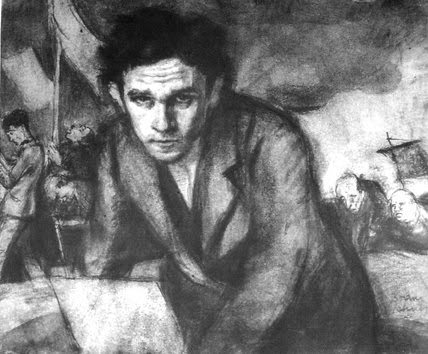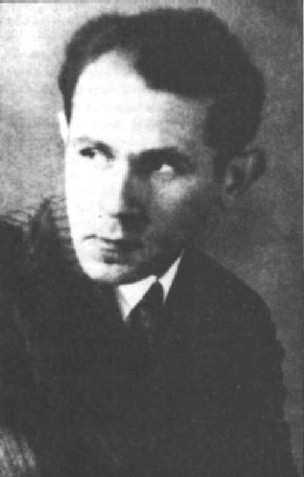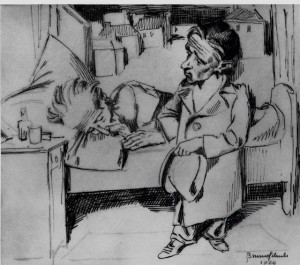It’s hard to separate the writing and art of Bruno Schulz from the tragedies of his life and death. Schulz’ peculiar inner world was shaped by the traumas of WW1, the death of his father, and an almost pathological solitude that cut him off even from his fellow Jews in the ghetto. In the wake of his death at the hands of a Nazi officer in 1942, many of his drawings and his final literary work, The Messiah, were lost forever. Under cover of darkness, a friend carried his body from where it lay in the street to a nearby Jewish cemetery. No trace of his grave site remains.
 I first became aware of Schulz through the Brothers Quay 1986 film of his short story collection, The Street of Crocodiles. Terry Gilliam called it one of the most beautiful films ever made, and he’s not wrong. The stuttering dolls and the clash of rusty machinery alongside throbbing organic matter stay with you long after the twenty minute film is over.
I first became aware of Schulz through the Brothers Quay 1986 film of his short story collection, The Street of Crocodiles. Terry Gilliam called it one of the most beautiful films ever made, and he’s not wrong. The stuttering dolls and the clash of rusty machinery alongside throbbing organic matter stay with you long after the twenty minute film is over.
I only read the book recently, needing something brief after a massive Donna Tartt blowout. The Street of Crocodiles bears little literal resemblance to the film, but thrums with the same unsettling energy. Beginning in a stiflingly hot day in the Polish city of Drogobych where Schulz lived and died, the reader is introduced to the strange inhabitants of the city, wheeling about like beetles on the baking pavement. Then come the even more disconcerting denizens of the family home. A shy, thin young man, Schulz inserts himself as an unobtrusive narrator, watching the strange comings and goings of his family with little concern for the creeping madness of his father and the violence of the strangely powerful servant Adela.
Schulz is most commonly lumped in with Kafka and Proust. Having only read Crocodiles so far, he reminds me most of magical realists like Angela Carter and Mikhail Bulgakov; more introverted, like a quiet cousin of theirs, but just as poetic and hilarious.
With Schulz, everyday sights are loaded with meaningful life. The landscape he traipses each day with his mother becomes a character in itself, as much as any family member: “And over the fence the sheepskin of grass lifted in a hump, as if the garden had turned over in its sleep, its broad peasant back rising and falling as it breathed on the stillness of the earth.” His disturbed father shares this odd sensitivity, adopting tailors’ dummies and treating them as beings capable of pain: “Who dares to think that you can play with matter, that you can shape it for a joke, that the joke will not be built in, will to eat into it like fate, like destiny?”
 He is sensitive without being sentimental, as if conscious that the rules of his world are not the same as his neighbours:
He is sensitive without being sentimental, as if conscious that the rules of his world are not the same as his neighbours:
“In a way, these ‘stories’ are true; they represent my style of living, my particular lot. The dominant feature of that lot is profound solitude, a withdrawal from the cares of daily life. Solitude is the catalyst that brings reality to fermentation, to the precipitating out of figures and colours.”
Reality goes in. Imagination – distilled – comes out.
Schulz’ drawings remind me of those of his contemporary Mervyn Peake – probably the reason I warmed to him so quickly. Schulz’ hollow-cheeked Jews wouldn’t be out of place in The Hall of Bright Carvings; Peake’s Mister Flay would be quite at home in The Book of Idolatry. Sideways black comedy came naturally to them both, although it’s impossible to look at them side-by-side without the sad realisation that Peake documented the atrocities of the Holocaust as an official war artist while Schulz – and so much of his surreal, beautiful work – did not survive it.

